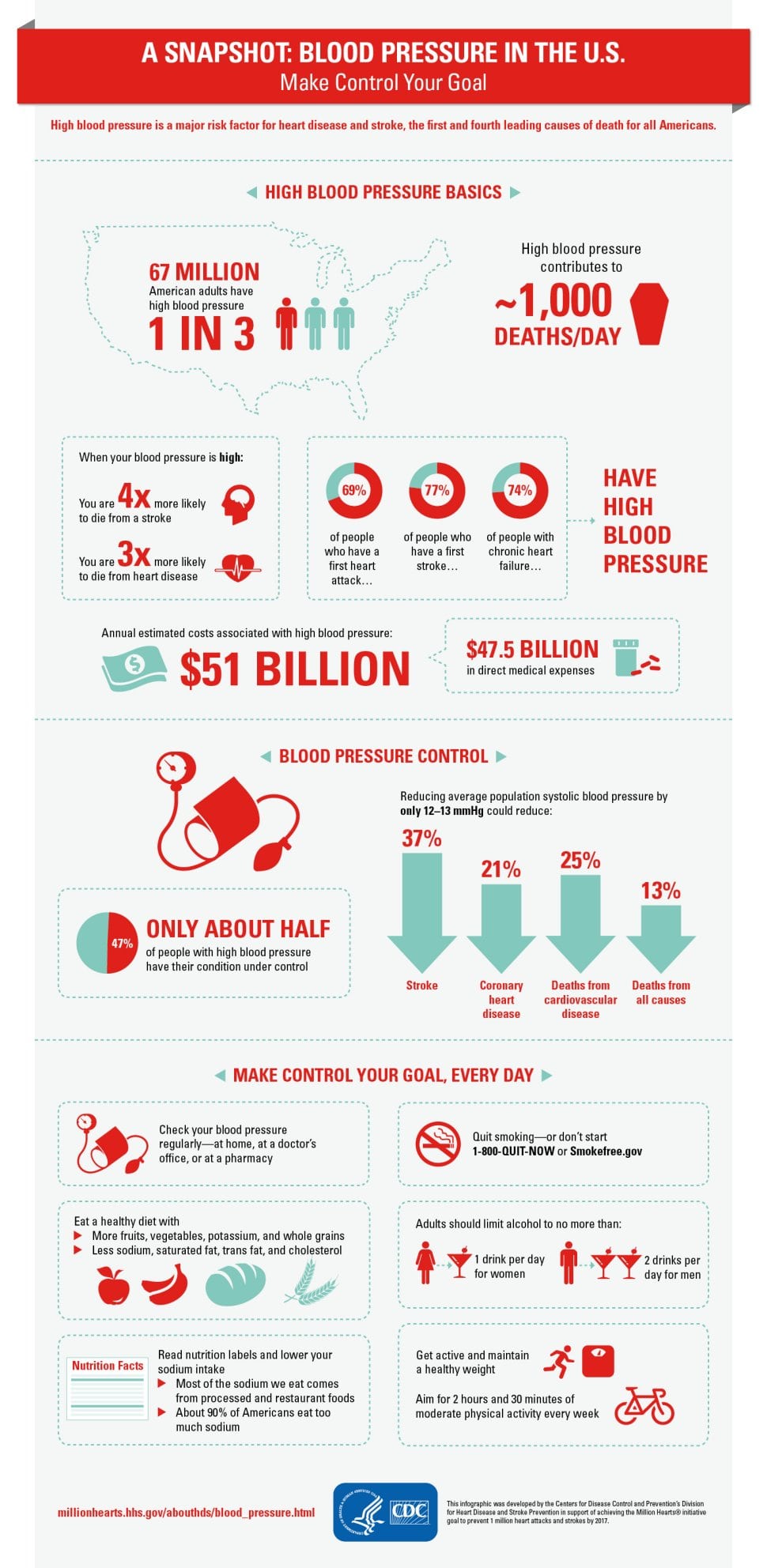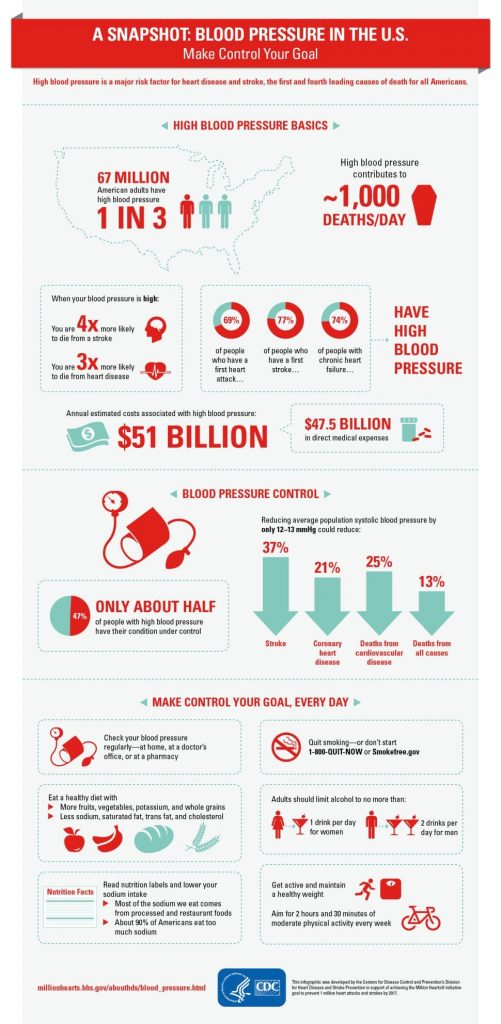
How to Control Your Blood Pressure [Infographic]
January 7, 2019 | Todd Lewison
High blood pressure is one of the leading causes of heart disease in the United States. According to the Centers for Disease Control and Prevention:
- 1 in 3 American adults are diagnosed with having high blood pressure
- 69% of the people who have a first heart attack also have high blood pressure
- High blood pressure can lead to a stroke, coronary heart disease, cardiovascular disease, and heart attacks
- High blood pressure costs the nation a whopping $51 billion each year
This infographic from the CDC breaks down what you need to know to control your blood pressure to stay healthy and reduce your risk of heart disease:
What You Can Do to Put Your High Blood Pressure Under Control
- Keep track of your blood pressure on a daily basis and compare your blood pressure fluctuations from day to day.
- Keep sodium consumption to a minimum. Sodium can sneak up on you through processed foods (such as canned soup), so it is very important to read food labels and keep track of your sodium intake.
- Cut back on caffeine, smoking and drinking alcohol. These things have shown to substantially increase blood pressure.
- Exercise regularly and keep at a healthy weight. There are so many different forms of workouts that you can choose from- bike riding, sports ( such as tennis, etc), walking and jogging, swimming, dancing and etc. Pick an activity that you like and the workout will be something to look forward to rather than something that you dread.
- Eat a healthy diet. Keep track of what you eat for a week and analyze it by seeing how much fruits, vegetables, and whole grains you consume compared to the amount of sugars, saturated fat, and cholesterol consumed. Focus on sticking to a balanced diet instead of going on and off diets that consist of only consuming vegetables ( protein and healthy fats are needed too)!
- Stress can be a huge factor in causing high blood pressure! Reduce stress by:
- Taking time to relax and take care of your health
- Create a shorter “ to-do” list and don’t spread yourself too thin by trying to get involved in too many activities
- Get enough sleep every night.
- Keep open communication with your co-workers and peers: not dealing with conflict can make stress continue for longer than it should.


